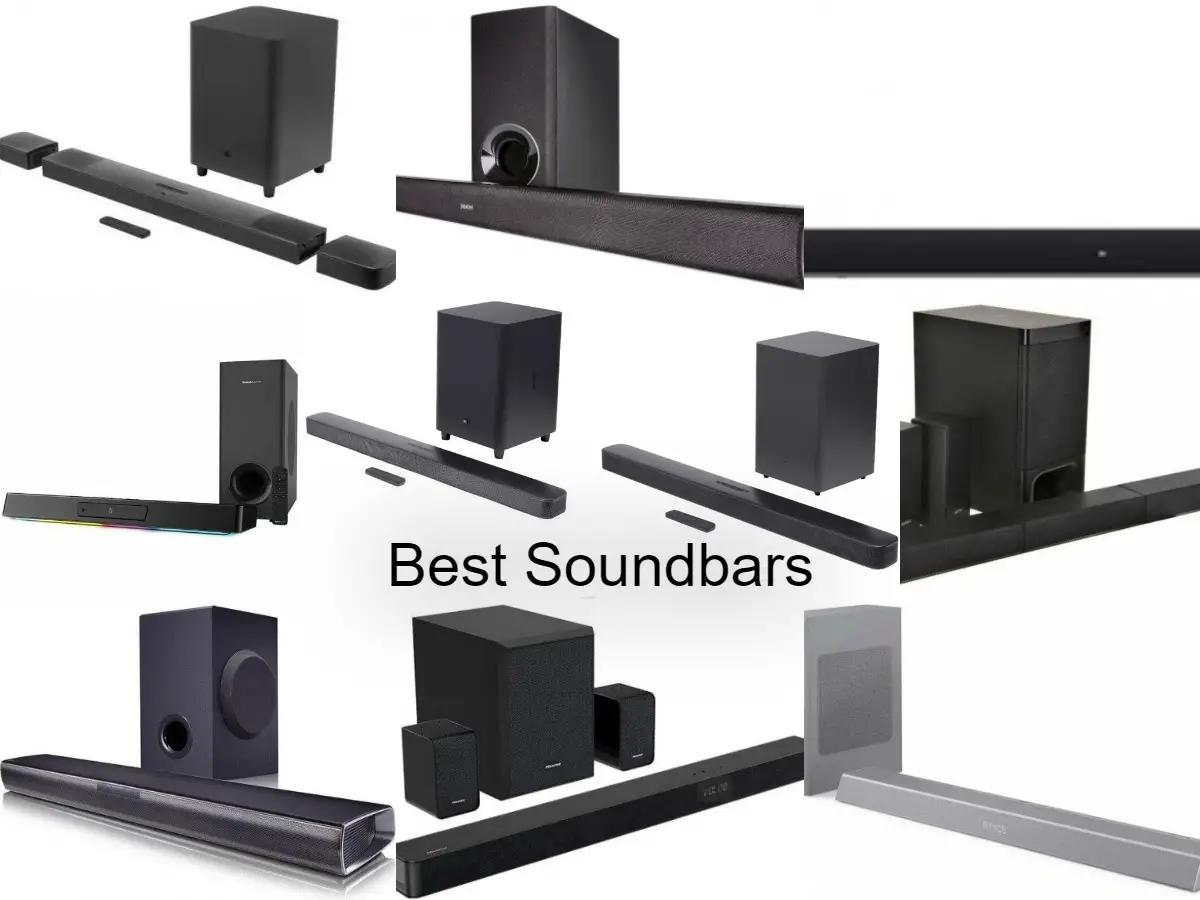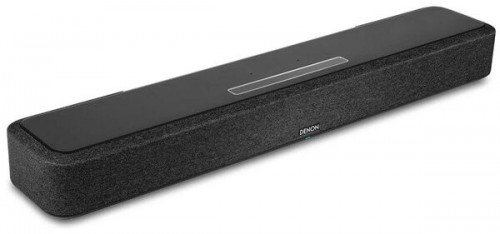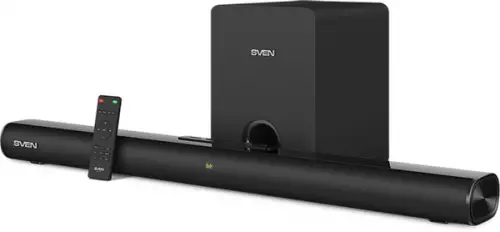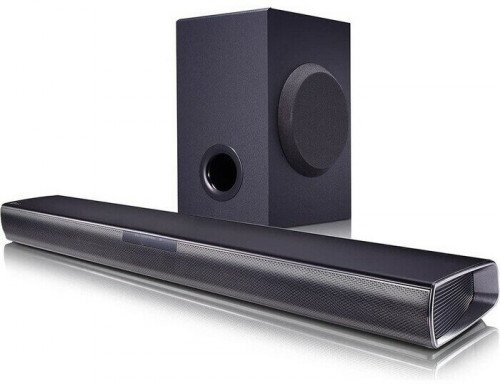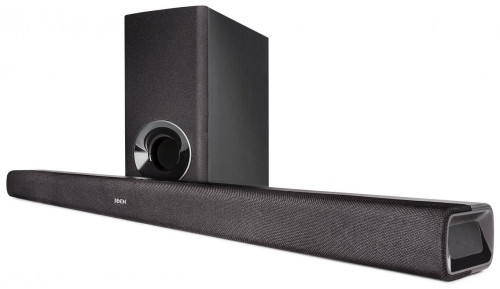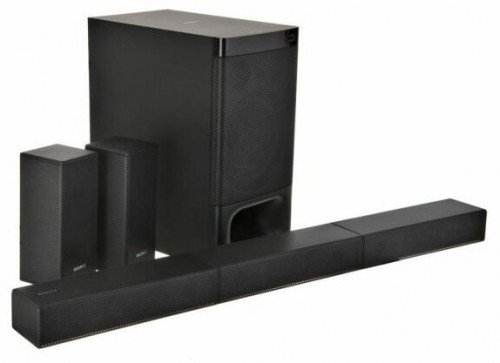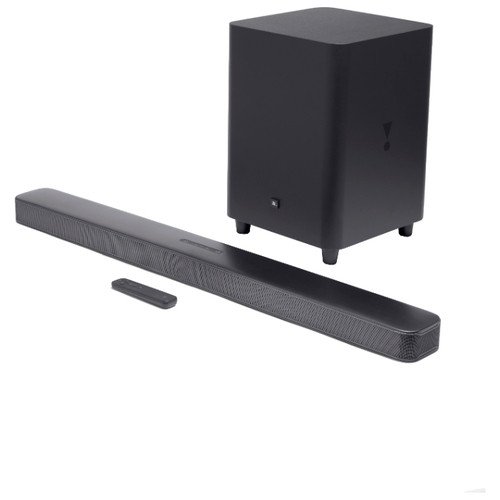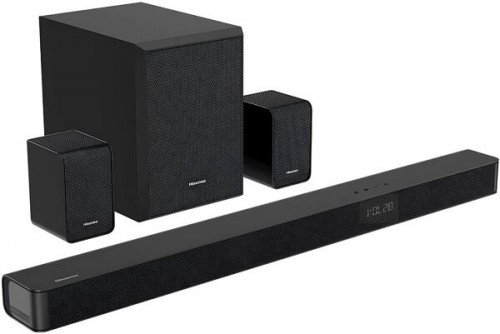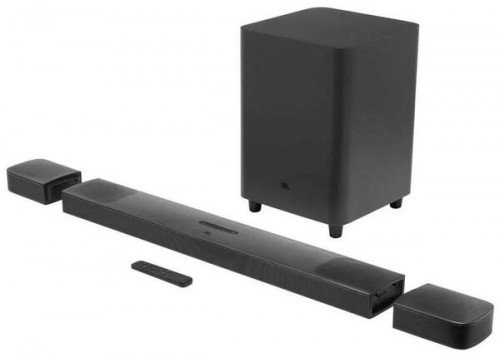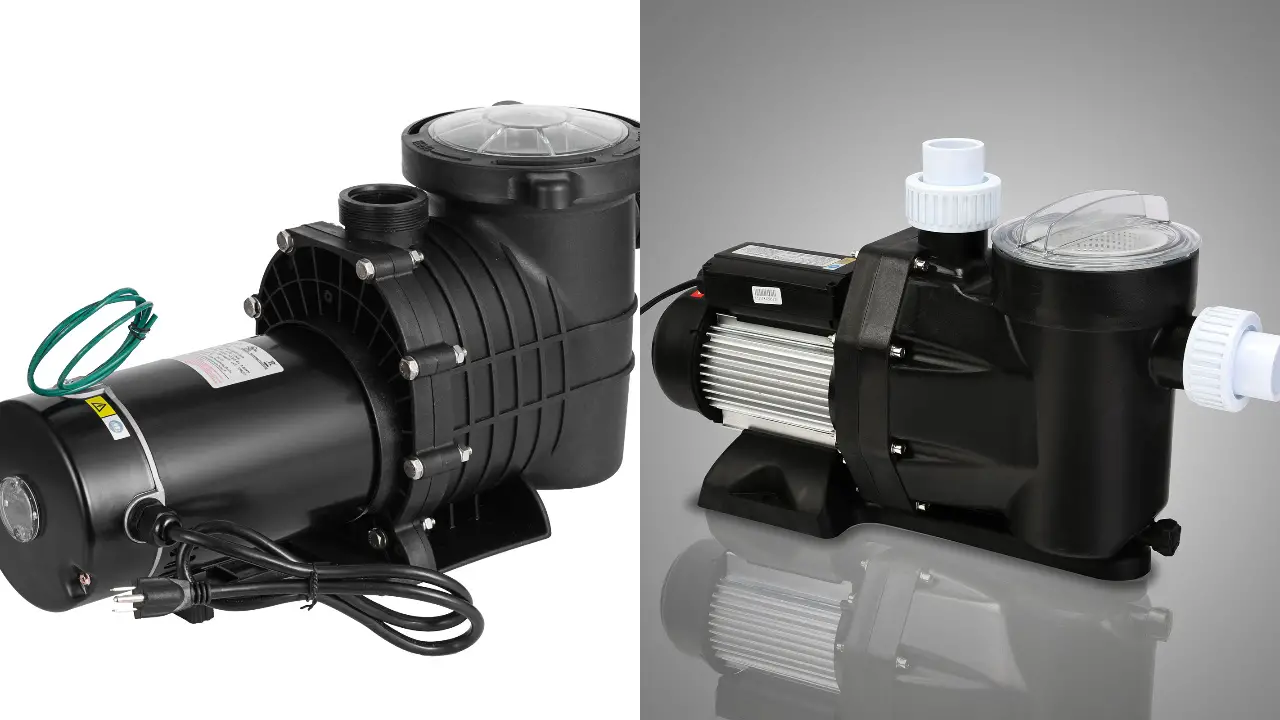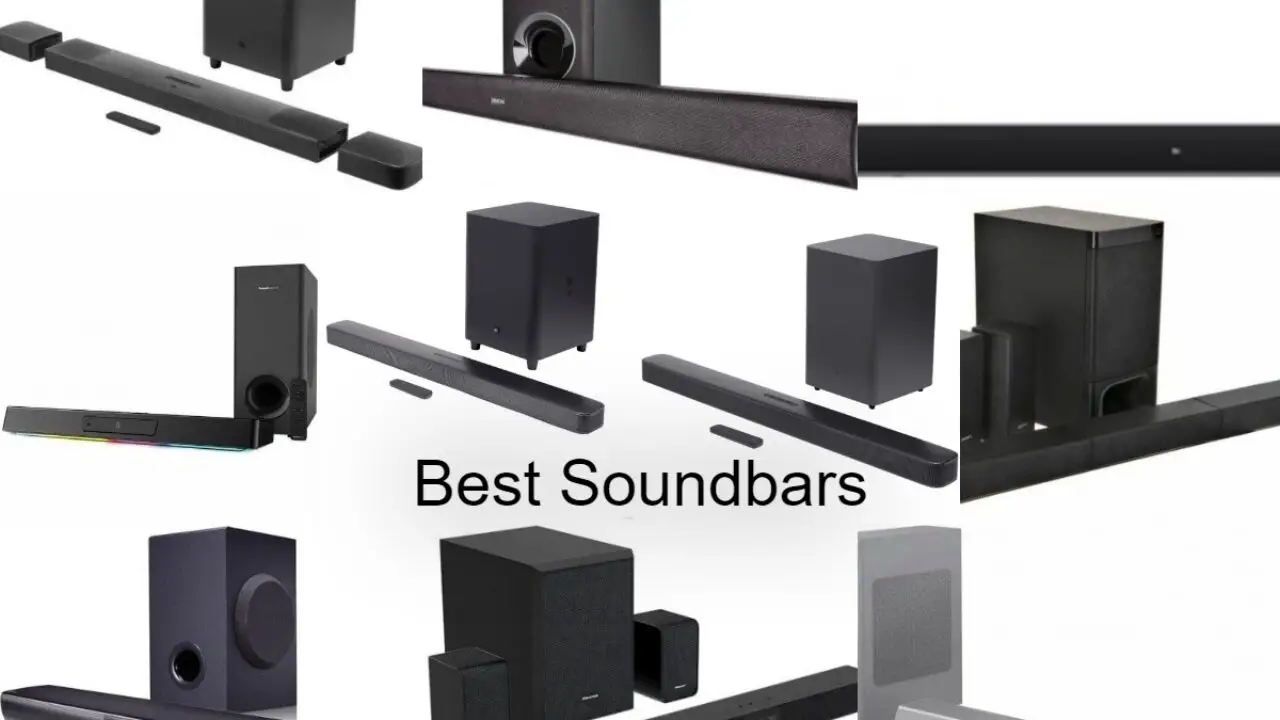High-quality sound from a “bar”: choosing the best soundbar
Our rating today is dedicated to the best soundbars. After all, even a technically advanced TV with a huge diagonal and excellent image will not be able to provide ideal sound when watching movies or listening to music. Connoisseurs of high-quality sound find a solution in purchasing home theaters. But not everyone has enough space to accommodate it. The solution to the problem can be a soundbar – a monoblock active speaker, the speakers of which are controlled by a complex digital algorithm that very convincingly imitates the sound of a conventional spatial acoustic system: a good soundbar, occupying a minimum of space in the room, will be able to divide the sound stage not only in the “right-left” directions, but and “back and forth” and even “up and down”, taking advantage of the peculiarities of human hearing. An inexpensive soundbar, although it will not provide spatial sound, will provide better quality in comparison with low-power speakers currently built into flat panels.
With the spread and improvement of wireless technologies, ease of installation has also become an advantage of soundbars: you just need to plug it into an outlet without running speaker cables throughout the room. A modern soundbar can interface with a sound source and an active subwoofer “over the air,” play audio from a local network, and much more.
So maybe you really don’t need a lot of speakers at home? Let’s try to assess what the market can offer us in 2024. Having examined many models presented on the market, we will present our rating of the best and most popular sound panels.
The Best All-In-One Soundbars
Denon Home Soundbar 550
The Denon Home Soundbar 550 opens the ranking of the best soundbars. The winner of the EISA Best Product 2021-2022 award truly deserves to be called universal. The soundbar has not only two HDMI connectors (one with ARC/eARC support), but also optical and linear inputs; it can connect to a home network via Ethernet and Wi-Fi, play music from flash drives, and is capable of working with network music streaming (and there is support for FLAC, ALAC and DSD formats) and, finally, supports proprietary HEOS technology, which allows you to connect Denon multimedia devices over a network with each other. That is, you can expand the system even to a 5.1 cinema, controlling it all from the remote control or your own smartphone. So, for versatility – a strong 10 out of 10 points.
Each channel of the soundbar has one 19 mm tweeter, two 55 mm full-range speakers and one passive radiator, the third radiator located at the back is “common” for both channels and processes the summed part of the low-frequency spectrum. This already provides it with good low-frequency performance, but don’t forget about HEOS: you can always buy an additional subwoofer, simply called Denon Home Subwoofer, and not worry about how to “make friends” with the device.
But the soundbar still won’t receive the final “top ten”: the price gap with other participants in the rating is too large, although inevitable.
YAMAHA YAS-109
Outwardly, an obscenely simple soundbar, on which you won’t even find the branded crossed tuning forks, is in fact very interesting and, perhaps, in terms of price, capabilities and quality, it will now receive a worthy place in the ranking of the best soundbars of 2024. Let’s start traditionally – “what does this mean?” Each channel of the YAS-109 is assembled on a 55 mm midrange driver and a dome tweeter with a classic 25 mm diameter, while the low-frequency part of the spectrum is combined into a common channel with its own amplifier, but is transmitted to 2 speakers with a diameter of 75 mm, plus there is a linear output to an external subwoofer. The power of each channel is 30 W, plus 60 W is taken over by the low-frequency path.
An interesting feature of the soundbar is the presence of a position sensor: it adjusts the frequency response of the audio path depending on the installation method. For example, a sound bar will sound differently under a TV or just “on the wall”, trying to adapt its “sound picture” to a specific location.
Bose TV Speaker
This American brand is quite firmly associated with good sound in general and interesting sound technologies in particular, so it’s worth taking a closer look at the TV Speaker. Moreover, despite this name, the sound bar is quite universal, having not only an HDMI port with ARC, but also “optics”, an AUX input and Bluetooth protocol version 4.2. Also on the rear panel you can find a subwoofer output and a USB service connector for firmware updates. According to a logic that is, frankly, incomprehensible, the manufacturer equips the soundbar with an optical cable, and not HDMI (although this is smarter in itself, and allows you to control the soundbar sound from the TV remote control).
The “internals” of the compact panel (its height is only 5 cm) are simple, but also clever. Two oval broadband speakers are responsible for the stereo image of the low and mid frequencies, between which there is a common central tweeter. Part of the body is occupied by a specially shaped waveguide pipe, which allows the soundbar to sound much more impressive than you would expect from such a set of speakers.
Sony HT-S100F
The versatility of a soundbar means an abundance of connection interfaces and quick transitions between them – well, Sony does a good job with this. The soundbar received not only HDMI with ARC support, but also an optical input, Bluetooth and a USB connector that allows you to play MP3 from flash drives. In this case, the MP3 player interface will be displayed on the screen of a TV connected via HDMI. For completeness, it would be worth duplicating the optical input with a coaxial one (not all TVs have “optics”) and adding analog “tulips” – this forced us to lower the rating points. Controlling the soundbar, either from the buttons on the case or from the included remote control, is intuitive (with the exception of one nuance, which is discussed below).
Built-in amplifier – Sony S-Master with a maximum power of 120 W. Rated power at 1% THD is 22 W for each woofer and tweeter (total 88 W). The acoustics, accordingly, are made according to a two-way design, each channel is served by one woofer and one tweeter. Supports proprietary S-Force surround sound technology, improved voice intelligibility, “night”, “music” and “cinematic” modes. So, the VOICE button on the remote control, which controls this very improvement in voice intelligibility, when pressed for a long time, activates and deactivates the HDMI ARC mode – not all buyers get to this section of the English-language instructions, and ARC, of course, does not turn on for them “at random”.
Also keep in mind that there is now a “gray” Sony HT-100 soundbar on sale: the absence of “F” in the marking only means that the power cord on the power supply will have to be changed immediately – the complete one will be for a “type G” socket (inherent in many African countries , Asia and the Middle East “inherited” from Britain), and not the European “type C” (on the block itself there is a standard “eight”, such a cable is not a problem to find). However, they can sell it when ordering via the Internet and as a “normal” HT-100F.
Sven SB-2150A
Despite the budget, this “people’s soundbar” (as it was once called in UPgrade magazine) acquired a wireless subwoofer and support for HDMI ARC. Naturally, there is an optical input and a linear one (3.5 mm jack, the kit includes both an AUX jack-to-jack cable and an adapter for tulips). It also supports Bluetooth operation and, finally, there is a USB port for the built-in player, which also supports lossless formats.
The soundbar has two speakers with a diameter of 46 mm for each channel, the declared power is 40 W per channel (the manufacturer, of course, does not indicate the measurement method). The subwoofer has a 145 mm speaker, the amplifier power is stated at 100 W, also “unknown”. The general character of the sound here is more “for cinema” than “for music”: there is a noticeable boominess in the bass with a lack of air in the “highs”. So support for high-quality audio playback is not one of the most valuable things here. But… look at the price again.
LG SQC1
A good inexpensive 2.1 soundbar from LG. For a fairly compact soundbar, especially in this price class, the “lows” will be an expected problem – but this is solved by the included subwoofer, and a wireless one at that. The system supports connections both via optics and through a linear input, as well as via Bluetooth – unfortunately, we already had to save money on HDMI. And even more so on HDMI ARC – however, the soundbar is declared compatible with original remote controls from LG, Sony, Philips, Sharp, Panasonic, Vizio, Toshiba and Samsung TVs.
The acoustics of the soundbar are assembled on two oval speakers 40×85 mm, power – 30 W per channel. The subwoofer has a 5.25-inch speaker with a power of 100 W. In reality, of course, the powers are “peak” for the acoustics, and not nominal for the entire system: suffice it to say that the sound bar is powered by a 20-watt power supply. But we are already accustomed to this. The subwoofer level is adjustable from -15 to +6 dB. Both the soundbar itself and the subwoofer are made in bass reflex housings.
The soundbar sounds good at moderate volumes – after that you begin to feel the flaws of both amplifiers and speakers. This, unfortunately, is the eternal scourge of the budget class: for rooms larger than the average room you need more serious equipment.
Xiaomi Cinema Edition Ver. 2.0
Here, from the name, two things are immediately visible: firstly, a clear focus “on cinema”, secondly, the fact that now there is already a modernized version on the market – and, knowing Xiaomi’s love for releasing initially “raw” things, which are then later W3bsit3-dns.com describes instructions for finishing it, I would like to hope that the Chinese themselves also decided to do this (in the sense of bringing it to mind, and not just giving instructions for “piling”).
The soundbar itself is simple – one midrange speaker and one tweeter per channel. The subwoofer is small – on a 6.5-inch speaker. The power, respectively, is 17 W per channel plus 66 W of the subwoofer. An option exclusively for small rooms – however, what other places will buy a budget soundbar?
Connection options are extremely simple: “digital” via coaxial or optical cable, 3.5 mm linear input. HDMI didn’t fit into the budget anymore.
As for the sound, let’s be simple: it’s still better than the acoustics of a no less budget TV to which the soundbar will be connected.
Philips TAB8505
This category of the ranking of the best soundbars in the 2024 version is opened by the Philips TAB8505. This soundbar has been “stuffed” to the fullest, but it’s worth warning: you won’t find it “gray” nowadays, alas (as well as its 3.1 format version – TAB8805). However, in itself it is really not bad: firstly, there is HDMI with support for ARC/eARC and proprietary EasyLink (available only when connected via HDMI to other Philips devices). Secondly, the soundbar can connect to a network via Wi-Fi (both 2.4 GHz and 5 GHz) and “pull” tracks from it in MP3, AIFF, FLAC, and so on. FLAC decoding is also supported from flash drives. There is support for integration into multiroom systems via Play-Fi. For control, you can use either the included remote control or a smartphone.
Each channel of the soundbar is “voiced” by one full-range speaker and one tweeter; the wireless subwoofer has a 5.25-inch speaker. Crossover frequency – 160 Hz. The sound of this entire system is really decent, plus there is always the possibility of expansion by adding new components via Play-Fi: so, even if the soundbar gets to us in a roundabout way, it’s worth paying attention to.
Denon DHT-S316
The Japanese company can please you with an interesting balance of “quality/opportunities/price”. The DHT-S316 soundbar has a natural and powerful sound, which indicates good acoustics in such a compact body. Of course, this is not a discrete hi-fi system, but by soundbar standards it is more than worth the money. Especially if you personally do not need streaming services and working with personal storage on a local network – these functions have been removed to save money.
Sound control is simple and clear – if in the Movie mode the sound is compressed and emphasized on special effects, then in the Music mode, on the contrary, it begins to “breathe”, putting the bass in the right place and slightly drying out its character. In the Night mode, the bass is “clamped” even more, especially in the lowest part of the spectrum, and the upper frequencies are compressed – a typical “night” mode for watching movies.
The three-mode “dialogue enhancer” works best not in TV shows or dubbed films, but when watching movies with the “native” sound track. The effect is quite delicate and does not spoil the sound, simply giving emphasis on the desired frequencies.
Creative Sound Blaster Katana V2
Next in the top of the best 2.1 soundbars is the Creative Sound Blaster Katana V2. The manufacturer positions this soundbar as a “gaming” one, hence its rather specific design. But let’s be honest: the idea of connecting a soundbar to a PC is quite sound, but most of them are still “tailored” for TVs – so the new “Katana” has a right to life, which is confirmed by the number of years that its predecessor of the first one has not left the shop windows generation (why, it’s still on sale).
Instead of two connectors (USB-A for flash drives and micro-USB for connecting to a PC), one type-C is now used, to which you can connect the included 1.2-meter adapter to USB-A. The first generation, which had connectors for a flash drive and a pair of 3.5 mm jacks for a headset on the back, received complaints due to inconvenience – so the new version “removed the unnecessary” by building two microphones directly into the soundbar, and finally placing the headphone output then in front. There are also optical and linear inputs, and unlike the first generation, HDMI has been added, and even with ARC support. Plus, an SXFI port has appeared (physically it’s a regular USB-A) for connecting a dongle of branded wireless headsets from the Super X-Fi line. When connected via USB, as before, you can use the soundbar as an external sound card (with surround sound decoding), and also configure it through a proprietary application.
The soundbar itself has 4 speakers: two broadband speakers look straight up from the holes in the aluminum panel, the tweeters are aimed at the listener. The subwoofer uses a long-throw speaker with a cellulose cone. The amplification circuit, thanks to the built-in multi-core DSP (after all, this is Creative!), is chosen to be complex, the frequencies are separated by the processor, so the amplifier of the soundbar itself is triamping: one path “serves” midbass (20 W per channel), the second – tweeters (15 W per channel) ), the 60-watt subwoofer amplifier already receives “cut off” low frequencies. And it all sounds very good: if on the first generation you had to turn the equalizer, now the soundbar is “ready out of the box” (although at low volumes it “goes out” noticeably).
Note that there is also a V2X version on sale – it differs only in a more compact subwoofer with a reduced speaker size, and, accordingly, the sound at the “lower” levels is not in its favor.
JBL Bar 2.1 Deep Bass
The overall good JBL Bar 2.1 soundbar, which is selling well here, has undergone an upgrade: the company has launched an updated model with the Deep Bass prefix. Indeed, the wireless subwoofer of the old model did not really impress with the power of the “bass” – after all, a 165-mm speaker is not enough to so easily “sound” the roar of explosions on the screen. In the new model, the diameter of the speaker remained the same, but its cone stroke was increased: it began to handle its 200 W of rated power noticeably more energetically and was generally more pleasant to the ear.
As for the soundbar, it is assembled according to the “two midrange speakers and one tweeter per channel” scheme, the per-channel power is 50 W at THD 1%. Its sound is not audiophile, the system is clearly designed primarily and secondarily for movies and computer games – the manufacturer himself uses the phrase “popcorn ready” in the booklet for good reason. The set of audio signal inputs includes HDMI, optical, Bluetooth 4.2: there is no line input, so owners of TVs with “tulips” are out of luck. USB, unfortunately, in the version for our market only works for firmware updates, but the American market model can also play MP3 files from USB.
Sony HT-S500RF
The soundbar format has made it possible to reduce the number of speakers in the set: the soundbar itself is responsible for the front and center channels, so that only two rear speakers and a subwoofer remain to be placed in the room. True, they are all wired, which reduces the ease of installation, but saves money compared to wireless systems.
The Sony S-Master digital amplifier is housed in the subwoofer housing, so all the connection points are located on its rear wall: HDMI connector (with ARC support), optical input, line input connector. The USB port and control buttons are located on the front panel of the subwoofer. Bluetooth connection is also supported.
The passive soundbar has two 48×90 mm woofers and two 25 mm dome tweeters (left and right channels); the same oval woofer is responsible for the central channel. The rear channel speakers again have the same woofers. The subwoofer has a 180mm driver. Power – 85 W each at 1% THD for the front channels; for the central, rear channels and subwoofer only peak, high is indicated… but uninformative and generally has little relation to reality. The amplifier, we note, required the use of active cooling, and the fan is loud during operation.
JBL Bar 5.1 Surround
Our rating of the best soundbars JBL Bar 5.1 Surround continues. This system is assembled from six oval broadband drivers in the center of the body and three tweeters, the phase shift distribution of which can be independently calibrated using proprietary JBL MultiBeam technology: the microphone records the pulse signals emitted by the acoustics, and based on this information, the processor calculates the “acoustic portrait” of the room. Moreover, the soundbar is initially modular: two battery-powered wireless speakers are docked to its sides, which can be distributed around the room if desired. A dedicated wireless subwoofer, assembled on a “quite grown-up” 10-inch speaker, is responsible for the low frequencies. The total power of all acoustics is 510 W.
Hisense AX5100G
A similar arrangement was used here, hiding the front and center channels in the soundbar itself – but the “rears” and the subwoofer are already wireless, the soundbar serves as the “head” (although the rear speakers are connected to each other by a cable – the receiver and amplifier are assembled in one, the second is passive) . On the back of the soundbar there are HDMI connectors (with ARC/eARC support), USB, AUX and digital inputs (both optical and coaxial, which is a plus). Dolby Atmos and DTS decoding is supported. Bluetooth module – modern, version 5.3.
The soundbar has 4 oval speakers, and the rear speakers have one round speaker. Even “on paper” the total power together with the subwoofer is small (340 W), so in a large room the system will be “lost” and the acoustics will have to be overloaded. However, this model, having entered our market in 2023, has already firmly established itself as a “good value for money” reputation, although it is now becoming more expensive.
JBL Bar 1000
The JBL Bar 1000 must also be included in the ranking of the best soundbars. There are as many as 10 speakers installed directly in the soundbar: 5 oval speakers 46×90 mm and 3 20 mm tweeters are responsible for the “front” and “center”, and 3 20 mm tweeters, plus two 70 mm wideband speakers directed upwards, turning “5.1” to the same “7.1”. The removable speakers each have one of the same tweeters and a high-range driver, and the subwoofer has a 10” speaker. The total power of all this stuff is 880 W at 1% SOI.
By the way, we didn’t mention removable speakers. They can actually be attached to the ends of the soundbar, while charging the built-in batteries – they are completely wireless, not only receiving a signal “over the air”, but also not requiring network cables. However, they also have Type-C charging ports.
The soundbar connects to the network via Ethernet or Wi-Fi, has three standard HDMI ports and a dedicated one with ARC/eARC support, as well as an optical input. But USB, as JBL likes to do, serves only for software updates – only soundbars made “for the USA” can play files from a flash drive. There is also Bluetooth 5.0.
The built-in sound processor supports custom surround calibration and decodes Dolby Atmos and DTS. Well, the presence of a network connection, as you understand, makes it possible to play streaming audio (both from the Internet and over a local network).
Which soundbar is better to buy?
The main criterion when choosing the best soundbar is, of course, high-quality sound. To achieve ideal sound, manufacturers of expensive sound bars use first-class components for their speaker systems and innovative technological developments. This is why professional sound panels produce powerful, deep, crystal clear, surround sound without distortion or interference, but the price of such combines is off the charts.
Budget models are aimed at the mass buyer, and although they are inferior to world leaders in sound quality, sometimes they are more than superior to them in functionality, going beyond the scope of a classic speaker system.
Connecting an external subwoofer via wireless technology is becoming an almost integral part of a modern soundbar. An important criterion is the design of the model. It is important that the soundbar fits harmoniously and organically into the interior of your TV and does not seem like an alien “body”.
The choice is always yours. Enjoy the shopping!
Check out other designs directly from your cellphone via WhatsApp Channel: https://whatsapp.com/channel/0029VaASACYFXUuYULZWe939.

